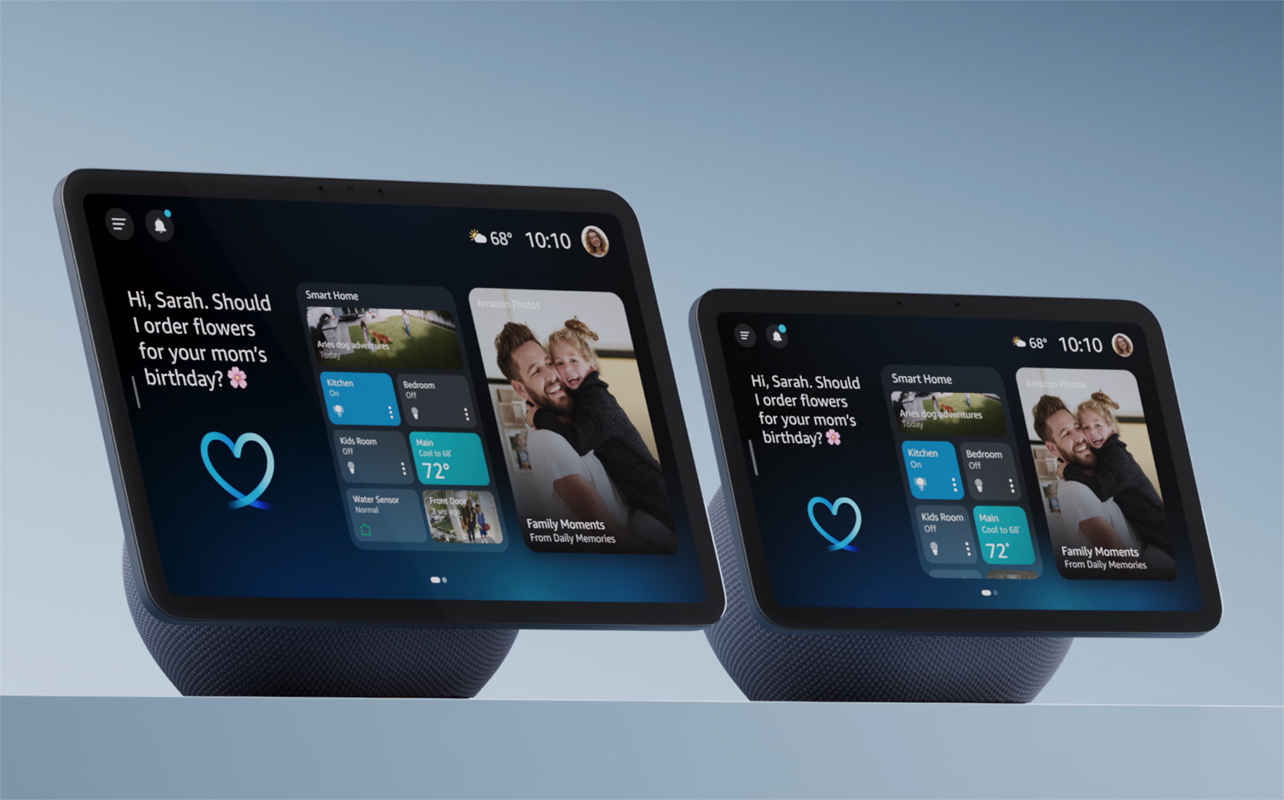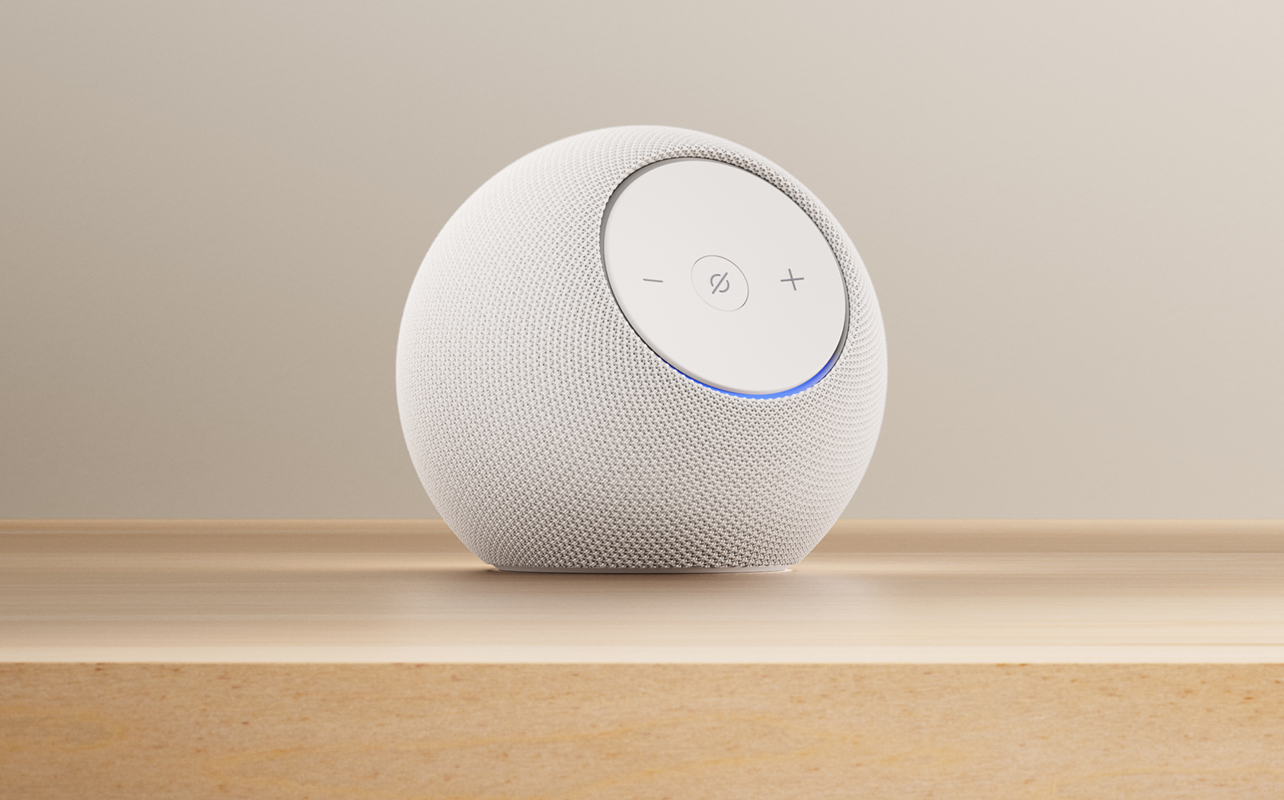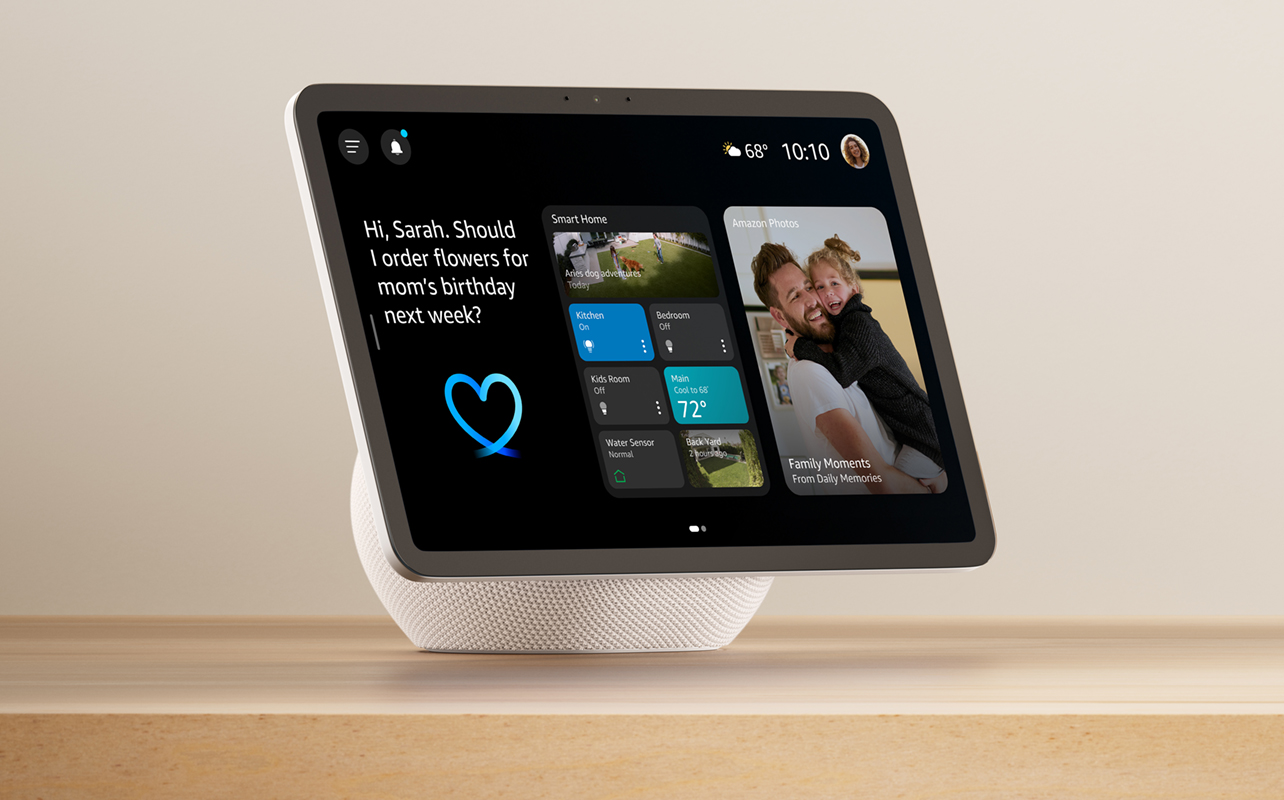
Amazon will roll out a range of devices in the coming weeks as part of its fall launch covering Echo and Alexa. Leading the way are no less than four different Echo devices serving both display and audio features driven by new processing power to advance what Alexa can do as an AI assistant.
That means all of these Echo devices will work with the smarter Alexa+, making it possible to do more than just get answers to what you want to know. Alexa has been Amazon’s standard voice assistant for years in handling tasks like playing music, answering questions, and controlling smart devices. Alexa+ is a more advanced version using generative AI for more conversational language, contextual awareness, memorizing user preferences, and handling more complex tasks.
It’s also subscription-based (around $19.99 USD per month for now), while the standard Alexa remains free. Device support for Alexa+ will start with the newer Echo models for now, with older models still to be determined. It’s also still a beta feature that has yet to roll out in Canada, though Amazon plans to do so in the coming months.
New Echo devices

Amazon says it built these new Echo devices “from the ground up”, suggesting not only new designs but also new hardware underneath as well. That appears to be true based on the specs, but let’s go over the devices themselves.
The Echo Dot Max is a newer take on the classic Dot design, only now gets a sound boost through a two‑speaker setup made up of a woofer and tweeter. This should make a noticeable difference in bass response. Indeed, Amazon claims a 3x boost compared to the 5th-generation Dot. The speaker system is no longer modular but integrated into the housing, freeing up more internal volume for what should be better sound.
On the display side, we have the Echo Show 8 (4th Gen) and Echo Show 11. Both feature better screen technology for improved clarity—and include a 13-megapixel camera for visual context. Overhauling their audio systems positions the stereo speakers to the front while custom woofers are optimized for room-filling sound.
The Show 11, in particular, is a new addition to the lineup, as no previous model was this big. The 11-inch display should make it much easier to check a calendar, view recipes, discover meal ideas, and manage shopping lists or a to-do list. You can also choose to use it as a digital photo frame when idle, and Alexa+ will be smart enough to find specific photos or create a personalized slideshow. The camera also has an auto-framing feature to ensure you stay centred in frame with more clarity during video calls, including with 3.3x zoom and noise reduction. Another way to stay connected with family or check on pets.
New hardware underneath
This is key to the rollout because it’s what ultimately powers all the other things these devices will do. Two chips—the AZ3 and AZ3 Pro—are the “brains” of the operation. The AZ3 is in the Echo Dot Max, and among its various features, it will be better able to understand conversational language when using Alexa. That includes a better chance of hearing the wake word because of 50% better background noise reduction.

The AZ3 Pro, which will be equipped in the two Show models, supports advanced language models and vision transformers. In practical terms, that means more realistic conversations, remembering your preferences, and ponder on vague requests, like where to go for dinner or finding help to fix a maintenance issue at home. In effect, the language models try to interpret your intent rather than forcing you to be precise each time you speak.
For vision transformers, this represents a newer type of AI related to image and video. For example, the Echo Show devices “see” through the onboard cameras and interpret what’s in front of them. That could be recognizing who just walked into the room, detecting gestures, or personalizing the screen for you as you get closer, like showing your calendar or a to-do list, for instance.
Enter Omnisense
There is a term for all this that Amazon calls Omnisense. It’s a smart sensor system that combines data from cameras, audio, ultrasound, Wi-Fi radar, accelerometers, and more to create an ambient AI that sees and hears to better understand the environment around you. That could mean turning on lights as you enter your home or even sending an alert if a smoke detector goes off and it senses no one is home.
As this will be an evolving technology through future updates, it’s not entirely clear how users will be able to decide on privacy levels. With cameras, microphones, Wi-Fi radar, and other sensory tech at work, Omnisense looks to cast a fairly wide net. Amazon is emphasizing privacy and security as critical to the system’s use at home, but personalized control levers will be the determining factor.
Smart home and home theatre
All of the new Echo devices work with smart home hubs that support Zigbee, Matter, and Thread, so you can control compatible smart home devices.
In addition, there’s a possible home theatre setup if you have a compatible Fire TV Stick. Set up five Echo Dot Max devices to create a surround sound system for your TV through a feature called Alexa Home Theater. Alexa steps in to handle most of the legwork in figuring out connections and placement, including tuning them to the room.
While very interesting, it’s unclear how well the speakers handle this kind of setup. Plus, the combined cost will mean Amazon meets with stiff competition from established brands like Sonos, Samsung, and Sony in this space.
Coming soon
Amazon is betting big that it can deliver an ambient intelligence through the new Echo line. If these devices can successfully and intuitively sense, respond, and assist without being intrusive—they will clearly move beyond just “smart speakers” to AI agents in the home. The privacy safeguards will be interesting to watch as this new sensory technology materializes.
The new Echo devices are available now for pre-order. Check out all the other current Echo devices and smart home devices available now.





